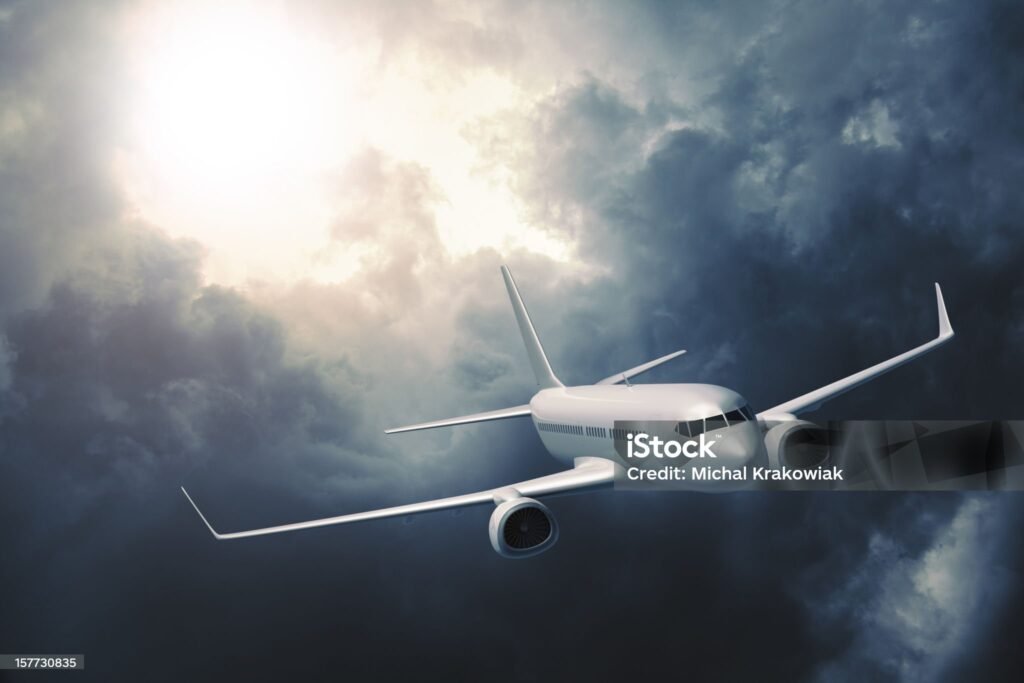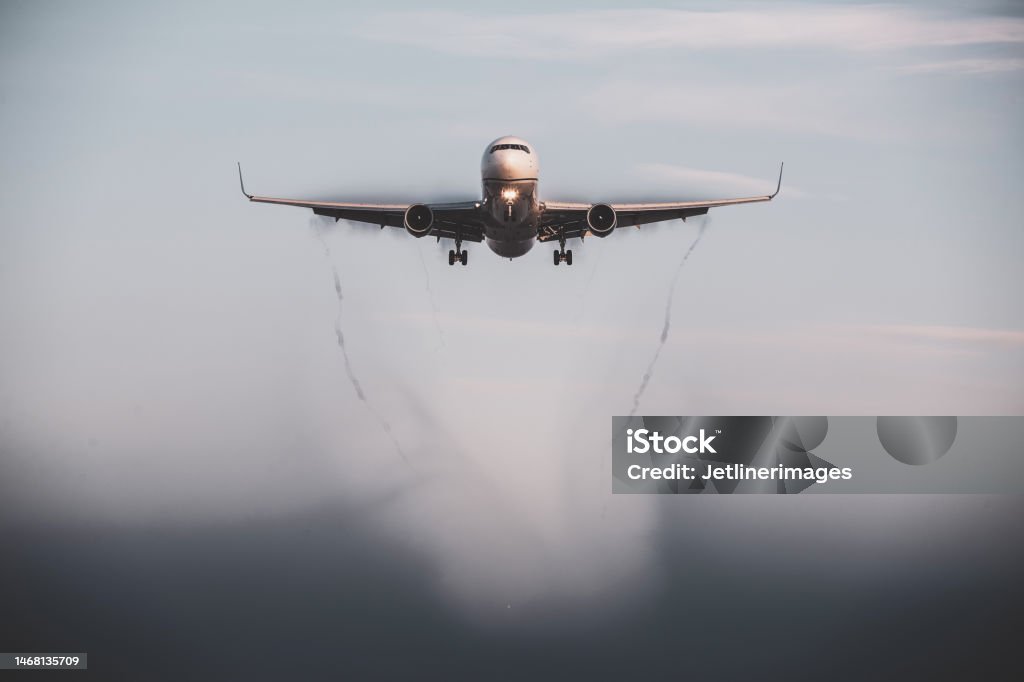Introduction to Air Turbulence
Air turbulence is a common phenomenon experienced during flights, characterized by irregular and often unpredictable movements of air. This instability often manifests as sudden, jarring movements of the aircraft, causing discomfort to passengers and crew. Understanding air turbulence begins with its basic definition: it is the chaotic, irregular motion of air currents that can result from various atmospheric conditions.
Turbulence can be categorized into several types, each with its unique characteristics and causes. Clear-air turbulence (CAT) occurs at high altitudes, typically above 15,000 feet, where the sky appears clear. It is usually caused by sudden changes in wind speed and direction, often occurring near jet streams or in the vicinity of mountain ranges. CAT is particularly challenging for pilots because it is invisible and difficult to detect with conventional radar systems.
Mechanical turbulence, on the other hand, is caused by obstacles such as buildings, mountains, or other structures that disrupt the airflow. As the wind moves over and around these obstacles, it creates eddies and other turbulent air patterns. This type of turbulence is most commonly experienced during takeoff and landing, when the aircraft is flying at lower altitudes, closer to the ground.
Thermal turbulence arises from the uneven heating of the Earth’s surface. As the sun heats different areas of the ground, rising columns of warm air, known as thermals, are created. When an aircraft flies through these thermals, it can experience sudden and sometimes intense turbulence. This type of turbulence is most common during the day, particularly in regions with strong solar heating and varying terrain.
In summary, air turbulence is a multifaceted phenomenon with various causes and types. By understanding the basic concepts and characteristics of different types of turbulence, passengers and aviation professionals can better anticipate and manage these often unavoidable aspects of air travel.

Table of Contents
The Science Behind Air Turbulence
Air turbulence, despite being a common phenomenon, is rooted in intricate scientific principles. At its core, turbulence is caused by the complex interplay of air currents, weather patterns, and atmospheric conditions. One of the primary contributors to turbulence is wind shear, which occurs when there is a sudden change in wind speed or direction over a short distance. This abrupt shift can create unstable airflows, leading to the bumpy and unpredictable movements experienced during a flight.
Jet streams, fast flowing, narrow air currents found in the atmosphere, also play a significant role in the formation of turbulence. These streams, which can reach speeds of over 200 miles per hour, are typically found near the tropopause and can cause significant variations in air pressure and velocity. As aircraft pass through these jet streams, they can encounter sudden and intense turbulence.
Convective currents, which are vertical movements of air caused by temperature differences, further contribute to turbulence. When warm air rises and cool air descends, it can create pockets of turbulent air. This is particularly common in areas with significant temperature gradients, such as over mountain ranges or during thunderstorms. Convective turbulence is often associated with cumulonimbus clouds, which are known for their towering and dense formations.
Predicting and measuring turbulence involves a combination of meteorological data and advanced technology. Meteorologists use weather models to forecast areas of potential turbulence, considering factors like wind shear, jet streams, and convective activity. Pilots and air traffic controllers rely on this information, along with real-time data from onboard instruments and reports from other aircraft, to navigate and minimize the impact of turbulence.
Understanding the scientific principles behind air turbulence helps in improving safety measures and enhancing the overall flying experience. By studying the behavior of air currents, weather patterns, and atmospheric conditions, we can better anticipate and manage the challenges posed by turbulence.
A Brief History of Air Turbulence
The phenomenon of air turbulence has intrigued and challenged aviators and scientists since the dawn of aviation. Early encounters with turbulence were often fraught with danger and uncertainty, as pilots lacked the technological tools and scientific knowledge to predict or effectively navigate through turbulent air. These initial experiences led to a myriad of misconceptions about the causes and nature of turbulence, often attributing it to supernatural or inexplicable forces.
One of the earliest significant milestones in understanding air turbulence came with the Wright brothers’ pioneering flights in the early 20th century. Recording their observations, they noted the erratic and unpredictable behavior of air currents, which they termed “air puffs.” These observations laid the groundwork for further scientific inquiry. Fast forward to the 1920s and 1930s, advancements in meteorology and the development of more sophisticated aircraft allowed for a more systematic study of air turbulence. During this period, the works of scientists like Theodore von Kármán and Ludwig Prandtl were instrumental in formulating the first theoretical models of turbulent flow.
The mid-20th century saw significant technological advancements, including the development of radar and other instruments that could detect and measure turbulence. The introduction of jet engines and high-altitude flight presented new challenges and opportunities for studying turbulence. Researchers began to understand the various types of turbulence, such as clear-air turbulence and wake turbulence, each with distinct causes and characteristics. This era also saw the establishment of international standards and protocols for reporting and mitigating turbulence, significantly improving flight safety.
In recent decades, the advent of computer modeling and satellite technology has revolutionized our understanding of air turbulence. These tools allow for more accurate predictions and real-time monitoring, enhancing both the safety and efficiency of modern air travel. As our comprehension of atmospheric dynamics continues to evolve, the historical journey of studying air turbulence serves as a testament to human ingenuity and the relentless pursuit of knowledge.
Notable Incidents Involving Air Turbulence
Throughout aviation history, there have been numerous incidents where air turbulence played a significant role, leading to severe consequences. One of the most well-documented cases occurred on December 28, 1997, when United Airlines Flight 826 encountered severe turbulence over the Pacific Ocean. The Boeing 747-100 experienced a sudden and violent bout of turbulence, resulting in injuries to 15 passengers and 3 crew members. The incident highlighted the unpredictable nature of turbulence and underscored the importance of always wearing seat belts while seated.
Another significant instance took place on October 20, 2013, involving Singapore Airlines Flight 308. The Airbus A380 encountered severe turbulence while flying from Singapore to London, leading to injuries among passengers and crew members. The turbulence was so intense that it caused food and drinks to be thrown around the cabin, illustrating the potential for chaos and harm during such events. This incident further reinforced the need for proper stowage of items and adherence to safety protocols.
Moreover, on January 7, 2018, Aeroflot Flight SU270, en route from Moscow to Bangkok, experienced severe turbulence, resulting in injuries to 27 passengers. The unexpected turbulence caused passengers to be thrown out of their seats, emphasizing the unpredictability and potential danger of air turbulence. This incident brought attention to the importance of continuous safety briefings and the need for passengers to remain vigilant at all times during the flight.
These notable incidents have significantly influenced aviation safety protocols and procedures. Airlines have introduced more rigorous turbulence detection systems and improved pilot training to better anticipate and manage turbulent conditions. Additionally, cabin crew members undergo extensive training to handle turbulence-related emergencies, ensuring passenger safety and minimizing injuries. Enhanced communication between meteorological services and flight operations also plays a crucial role in mitigating the risks associated with air turbulence.
Impact on Aircraft and Passenger Safety
Air turbulence, an unpredictable and often unavoidable phenomenon, significantly impacts both aircraft integrity and passenger safety. Structural stress on aircraft due to turbulence can lead to wear and tear, affecting the longevity and performance of the airframe. These stresses can manifest in various forms, from minor cosmetic damage to more critical structural issues. Modern aircraft are designed to withstand a substantial amount of turbulence, yet continuous exposure can still necessitate more frequent maintenance checks and part replacements.
For passengers and crew, the primary concern with turbulence is the potential for injuries. Sudden, severe turbulence can cause unrestrained passengers to be thrown about the cabin, leading to bumps, bruises, and more serious injuries. Unsecured objects can become projectiles, posing additional risks. The importance of adhering to seatbelt policies cannot be overstated; wearing seatbelts significantly reduces the likelihood of injury during unexpected turbulence. Airlines emphasize this safety measure by encouraging passengers to keep their seatbelts fastened whenever seated, even when the seatbelt sign is off.
Flight crews are trained to handle turbulence and minimize its effects on passengers. Pilots receive extensive training on how to navigate turbulent conditions, including identifying potential areas of turbulence through weather reports and real-time data from onboard instruments. They can often mitigate the severity of turbulence by adjusting flight altitude or route. Additionally, communication from the flight deck can help to keep passengers informed and calm during turbulent periods, reducing anxiety and potential panic.
In the cabin, flight attendants play a crucial role in ensuring passenger safety. They are trained to handle turbulence-related incidents, secure the cabin quickly, and provide assistance to injured passengers if necessary. Pre-flight briefings and safety demonstrations also serve as vital tools to prepare passengers for the possibility of turbulence and instruct them on the best ways to protect themselves.
Ultimately, while air turbulence remains a challenging aspect of air travel, rigorous safety protocols and advanced training for flight and cabin crews work in tandem to mitigate its risks, ensuring that air travel remains one of the safest modes of transportation.
Technological Advances in Turbulence Detection
Over the decades, the aviation industry has seen significant advancements in turbulence detection technologies. These innovations play a crucial role in enhancing flight safety and passenger comfort. Among the key tools developed are weather radar, Light Detection and Ranging (LIDAR), and sophisticated turbulence prediction models.
Weather radar is one of the most commonly used technologies in detecting turbulence. Modern weather radars are capable of scanning the atmosphere for moisture and precipitation, providing pilots with real-time data on weather conditions. This information helps in identifying potential turbulence zones, allowing pilots to adjust flight paths accordingly. Over the years, advancements in radar technology have led to more accurate and reliable data, making it an indispensable tool in aviation.
LIDAR, another cutting-edge technology, uses laser pulses to measure atmospheric conditions. Unlike traditional radar, LIDAR can detect clear-air turbulence, which is not associated with visible weather phenomena like clouds or storms. This makes it particularly valuable for detecting turbulence that cannot be seen by the naked eye or traditional radar systems. The precision of LIDAR technology has greatly enhanced the ability of pilots and air traffic controllers to anticipate and manage turbulence.
In addition to hardware-based solutions, turbulence prediction models have seen remarkable improvements. These models utilize complex algorithms and vast amounts of meteorological data to forecast turbulence along flight routes. By integrating data from various sources such as satellites, aircraft sensors, and ground-based weather stations, these models provide highly accurate predictions. This predictive capability allows for better flight planning and risk management, minimizing the likelihood of encountering severe turbulence.
Overall, the continuous evolution of these technologies has substantially improved the detection and management of air turbulence. As a result, flights have become safer and more comfortable for passengers. The integration of advanced radar, LIDAR, and predictive models represents a significant leap forward in our ability to understand and mitigate the impacts of turbulence in aviation.
Preventive Measures and Best Practices
Dealing with air turbulence effectively requires a combination of preventive measures and best practices for both pilots and passengers. For pilots, it is crucial to stay informed about weather conditions and turbulence reports before and during the flight. Utilizing advanced weather radar systems and turbulence prediction models can help pilots anticipate and navigate turbulent zones. Moreover, maintaining clear communication with air traffic control and other aircraft in the vicinity ensures that pilots receive timely updates on potential turbulence.
When encountering turbulence, pilots should adhere to standard operating procedures, including adjusting altitude and speed as necessary. It is also essential to keep the seatbelt sign illuminated and inform passengers about the expected duration of turbulence. This not only enhances passenger safety but also reduces the risk of injuries caused by sudden movements. Pilots should also engage the aircraft’s autopilot and systems designed to stabilize the aircraft during turbulent conditions.
For passengers, the key to staying safe and comfortable during turbulence lies in following safety protocols and the crew’s instructions. Always fasten your seatbelt when seated, even if the seatbelt sign is off, as turbulence can occur unexpectedly. Stowing away personal items securely in overhead bins or under the seat in front of you minimizes the risk of injury from loose objects. Additionally, passengers should pay close attention to turbulence-related announcements and avoid moving around the cabin during turbulent periods unless absolutely necessary.
Passengers can also manage discomfort caused by turbulence by practicing relaxation techniques, such as deep breathing exercises, and wearing comfortable clothing. Staying hydrated and avoiding excessive consumption of caffeine or alcohol can also help reduce the physical effects of turbulence. Finally, being aware of turbulence patterns on specific routes and choosing seats over the wings, where turbulence is felt less, can contribute to a more comfortable flight experience.
Future of Air Turbulence Research
Advancements in the study of air turbulence promise to transform our understanding and management of this complex phenomenon. Ongoing research is increasingly focused on harnessing the power of advanced computing technologies and sophisticated algorithms. These tools allow scientists to analyze vast amounts of data, leading to the development of more accurate predictive models. Such models aim to forecast turbulence with greater precision, helping to mitigate its impact on air travel.
One significant area of interest is the integration of artificial intelligence (AI) and machine learning. These technologies can process real-time data from multiple sources, such as satellites, weather stations, and aircraft sensors. By identifying patterns and anomalies, AI systems can predict turbulence events before they occur, providing critical information to pilots and air traffic controllers. This proactive approach could drastically reduce the number of turbulence-related incidents, enhancing passenger safety and comfort.
Climate change is another crucial factor influencing the future of air turbulence research. As global temperatures rise, weather patterns are expected to become more erratic, potentially leading to an increase in turbulence incidents. Researchers are investigating the long-term effects of these changes on atmospheric stability. Understanding how evolving weather patterns impact turbulence is essential for developing adaptive strategies to manage its risks effectively.
Innovations in aircraft design are also playing a pivotal role. Engineers are exploring materials and structural modifications that can better withstand turbulent conditions. For instance, advancements in composite materials and aerodynamic shapes aim to make aircraft more resilient to sudden air pressure changes. These improvements could lead to a new generation of aircraft that are both safer and more efficient in turbulent air.
In the realm of atmospheric science, high-resolution climate models are being refined to provide deeper insights into turbulence formation. Collaborative efforts between meteorologists, engineers, and data scientists are essential to these endeavors. By leveraging interdisciplinary expertise, the aviation industry can anticipate and adapt to the dynamic challenges posed by air turbulence.
Ultimately, the future of air turbulence research is poised to benefit from technological advancements and a deeper understanding of environmental changes. These efforts will not only enhance the safety and efficiency of air travel but also contribute to broader scientific knowledge about our planet’s atmosphere.

Read more on newzworlds – https://www.newzworlds.com
Read the latest air turbulence in details on – http://www.cnn.com
